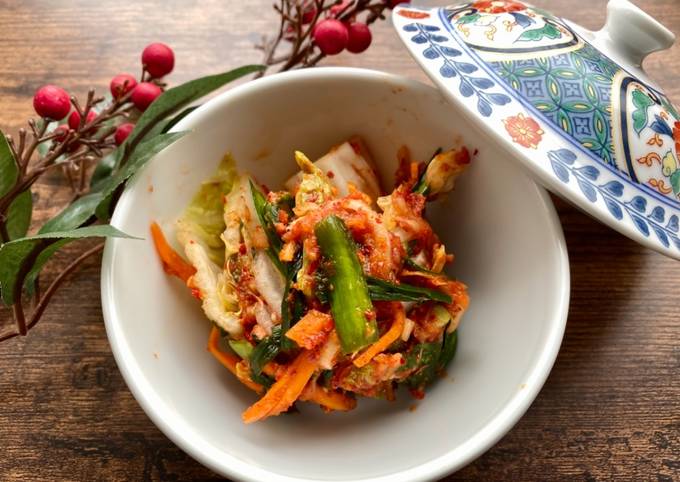Kimchi. Kimchi, a staple in Korean cuisine, is a traditional side dish of salted and fermented vegetables, such as napa cabbage and Korean radish. Kimchi Day ♥ День КИМЧИ. Корейское Кимчи Рецепт Korean Kimchi (Fermented Napa Cabbage) Recipe 김치 만들기. Корейская Кухня Дома. Kimchi is a traditional Korean dish made of seasoned vegetables and salt.
 With a complex flavor, variety of uses, and an all-star nutritional scorecard, kimchi's appeal is broad and deep.
Made from vegetables, garlic, ginger, and fish sauce, it hits a.
Kimchi is a traditional Korean dish and is a major staple in Korean cuisine.
With a complex flavor, variety of uses, and an all-star nutritional scorecard, kimchi's appeal is broad and deep.
Made from vegetables, garlic, ginger, and fish sauce, it hits a.
Kimchi is a traditional Korean dish and is a major staple in Korean cuisine.
Hey everyone, it's me, Dave, welcome to my recipe page. Today, I will show you a way to prepare a special dish, kimchi. One of my favorites food recipes. This time, I am going to make it a little bit tasty. This will be really delicious.
Kimchi is one of the most favored of recent trending foods on earth. It's enjoyed by millions daily. It is simple, it is fast, it tastes delicious. They are fine and they look fantastic. Kimchi is something that I have loved my whole life.
Kimchi, a staple in Korean cuisine, is a traditional side dish of salted and fermented vegetables, such as napa cabbage and Korean radish. Kimchi Day ♥ День КИМЧИ. Корейское Кимчи Рецепт Korean Kimchi (Fermented Napa Cabbage) Recipe 김치 만들기. Корейская Кухня Дома. Kimchi is a traditional Korean dish made of seasoned vegetables and salt.
To begin with this recipe, we have to first prepare a few ingredients. You can have kimchi using 14 ingredients and 8 steps. Here is how you cook that.
The ingredients needed to make Kimchi:
- {Take 1/2 of Chinese cabbage.
- {Make ready of Salt(2.5% of cabbage weight).
- {Get 1/2 of apple.
- {Get 15 g of ginger.
- {Take 25 g of garlic.
- {Take 1/4 of onion.
- {Take 1 tablespoon of fish sauce.
- {Take 40 g of Korean chilli powder.
- {Take 1 tablespoon of sugar.
- {Make ready 40 g of salted small shrimp (option).
- {Make ready 30 g of green onion.
- {Take 30 g of green leek.
- {Get 30 g of carrot.
- {Get 100 g of Daikon radish.
There are many different varieties (we will get into that later) of Kimchi. Although many people get a chill through their spine at the very mention of the word pickles, Koreans have found a way to make Although the popularity of kimchi is still rising in the West, it is an ancient dish, dating about two thousand years back, when it was first mentioned in. Kimchi, also spelled gimchi or kimchee, refers to a traditional Korean fermented dish made of seasoned vegetables. The most common Korean banchan, Koreans eat kimchi eaten with rice along with other banchan dishes.
Steps to make Kimchi:
- Cut the Chinese cabbage half at the core and divide it into three parts..
- Sprinkle salt on Chinese cabbage, deflate in a plastic bag and close. Place the weight and soak for 1 day or more..
- Two days later, squeeze the Chinese cabbage to drain the water..
- Cut the vegetables into 4 cm pieces, take the core of the apple, and peel the ginger..
- Put apples, garlic, ginger and onions in a food processor to make a smooth paste..
- Put paste, vegetables, fish sauce, salted small shrimps, Korean chili powder and sugar in a bowl and mix well by hand..
- Put the kimchi mixture on the core of Chinese cabbage. Put the kimchi in plastic bag and put the kimchi mixture on top..
- Keep in refrigerator and you can eat from one day after..
Making kimchi was historically a way for people to preserve vegetables for the long harsh Korean winter, before the advent of modern refrigeration. In many ways, kimchi's development parallels the development of similar preservation methods in other regions of the world. Kimchi (김치) is a collective term for vegetable dishes that have been salted, seasoned, and fermented. The history of kimchi goes back to ancient times. Napa Cabbage Kimchi from 'Maangchi's Real Korean Cooking'.
So that is going to wrap it up for this exceptional food kimchi recipe. Thanks so much for your time. I'm confident that you will make this at home. There's gonna be more interesting food at home recipes coming up. Remember to bookmark this page on your browser, and share it to your loved ones, colleague and friends. Thanks again for reading. Go on get cooking!